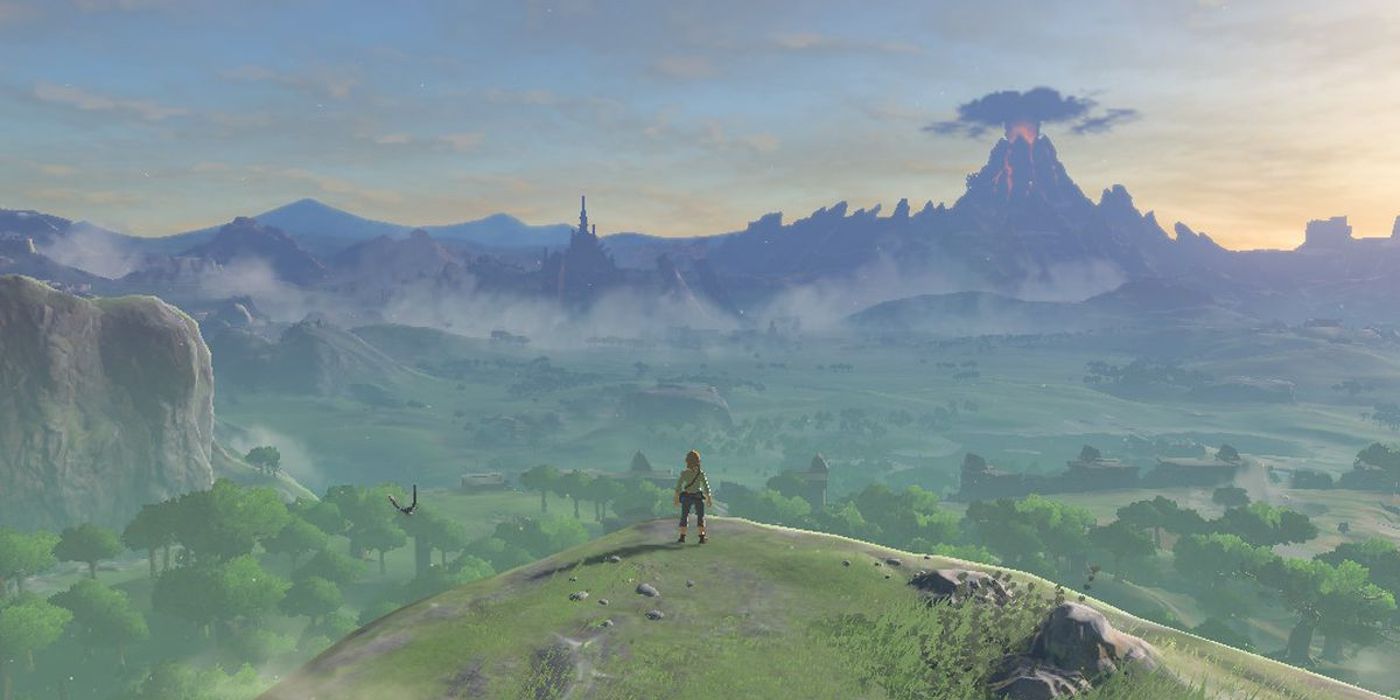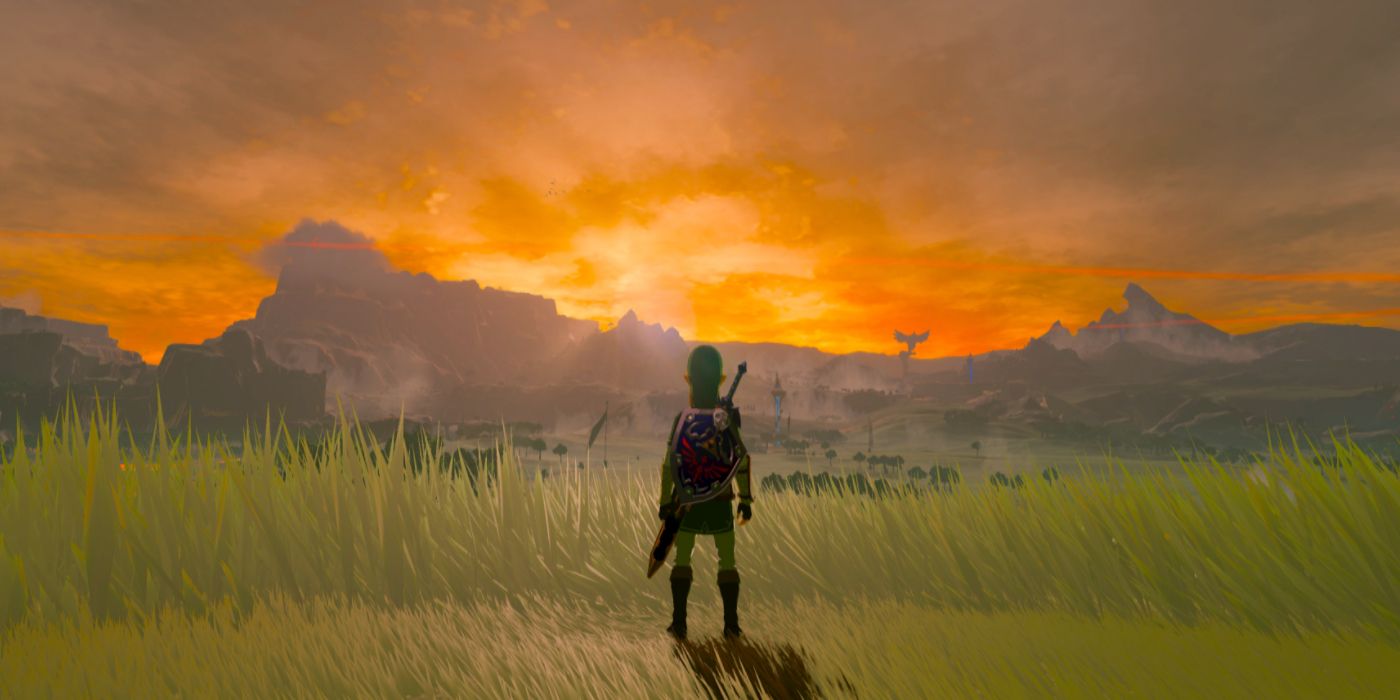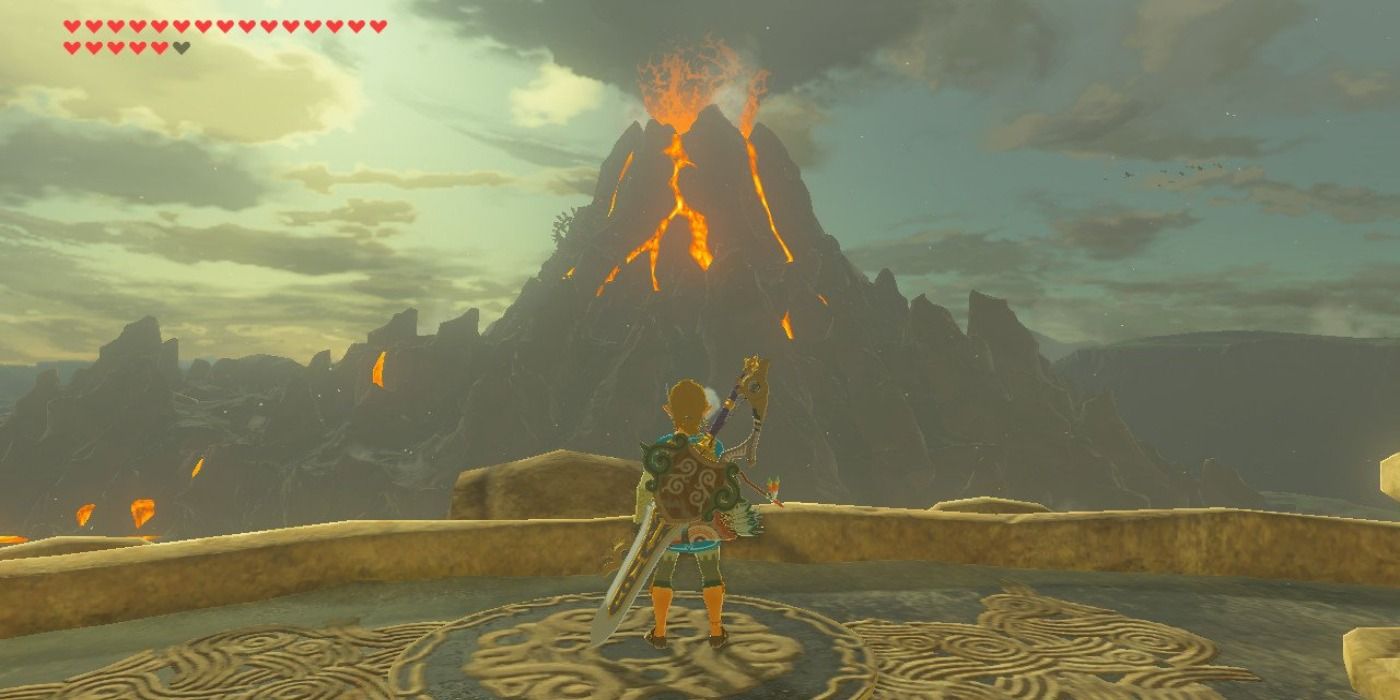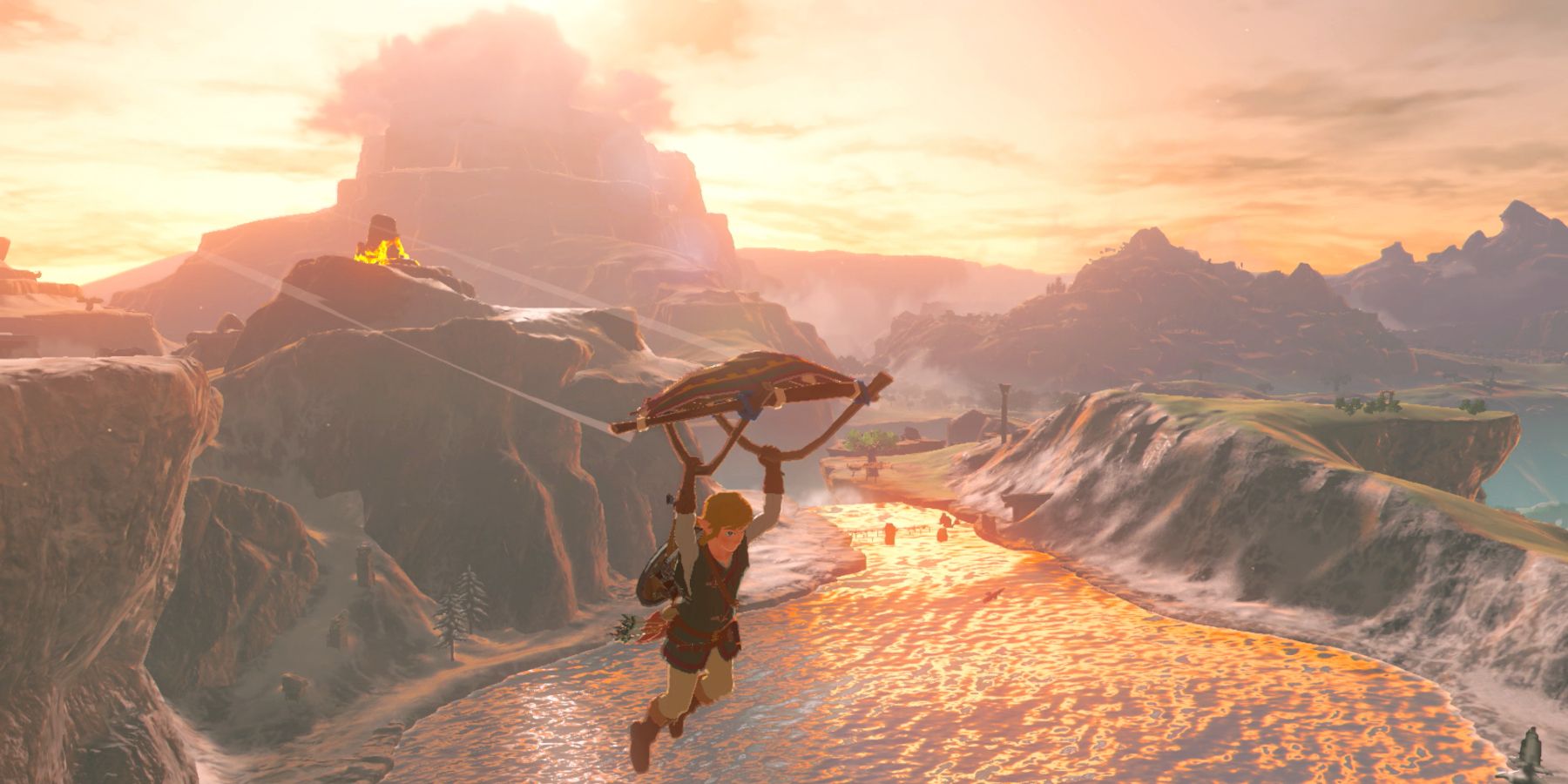Breath of the Wild, the revolutionary 2017 addition to The Legend of Zelda franchise, uses music and sound to create an unparalleled sense of place within the game’s enormous open world. More than any previous Zelda game, Breath of the Wild emphasizes location and emotion, using Hyrule’s desolate, rustic countryside to create a connection with the player. Instead of propelling Link’s story forward with dungeons, items and cutscenes, which are all typical features of previous entries in the series, Breath of the Wild encourages progress through exploration and curiosity, often propelling that mystique forward with its minimalistic soundtrack.
Unlike earlier Legend of Zelda games, Breath of the Wild’s story isn’t crucial to experiencing Link’s adventure. Although the Great Calamity is pivotal to Nintendo’s latest iteration of Hyrule, it’s because of its effect on the land, not the series of events leading up to the destruction. For the first time in The Legend of Zelda history, character-driven narratives take a backseat in Breath of the Wild, and environmental storytelling takes the lead.
Sound is more important in Breath of the Wild than in any previous Zelda title. Without an immersive soundtrack, which includes sound effects in addition to full orchestral pieces, the game risked losing that feeling of wonder and mystery that is so important to the way players play Breath of the Wild, especially during their first experience with it. Luckily, the final product has made BOTW one of the most beloved games of all time, and its unparalleled sense of place, which relies heavily on its relationship to sound, can be credited for that success.
Music & Sound Help Create An Immersive Hyrule In BOTW
In Breath of the Wild, the music - or lack thereof, in some cases - becomes a part of the living world around Link as he explores Hyrule. While most of the pieces included in the game aren’t technically sound effects, per se, their minimalistic nature serves to create an atmosphere more than a traditional video game soundtrack. Although each track utilizes numerous talented instrumentalists, the focus is usually on only a handful of instruments - an unobtrusive percussive beat in the background, a harp or flute in the forefront, and stringed instruments to bolster the piece’s depth.
Because of this, the music in Breath of the Wild tends to fade into the environment, blending in and emphasizing the feelings of loneliness and desolation present throughout Hyrule after Zelda's Great Calamity. It never makes a big statement, instead opting to subtly guide the player through emotion. The sounds in Breath of the Wild indicate how one should feel in each area, both giving the world life while also emphasizing the tragedy of its destruction. The music serves to place the player in the world rather than creating a typical, noticeable, ever-present soundtrack.
Since melodic tracks are few and far between, as well as often minimalist in nature, it makes the infrequent addition of the game’s faster-paced battle music even more stressful and engaging for the player too. While most songs in Zelda: Breath of the Wild do rely on just a few instruments blending into the background, that is not always the case, especially during boss fights and encounters with Guardians. Higher tempos, heavy percussion, and an overwhelming sense of urgency accompany the music that indicates a Guardian’s arrival in stark contrast to almost every other piece in the game.
Breath Of The Wild Seamlessly Incorporates Its Soundtrack
With this strategy, The Legend of Zelda: Breath of the Wild itself emphasizes the importance of its soundtrack as part of the environment. Since the orchestral work was created to be part of the world rather than an addition to it, drawing attention to the music when BOTW's Guardians are near the player intentionally disrupts the their reverie. Instead of having the sounds fade into their gameplay experience as part of the whole package, it’s suddenly in the forefront, creating a tension that isn’t otherwise present.
Additionally, the music found in towns throughout Hyrule sits somewhere in the middle, between the minimalist pieces that play while exploring the open world and the frantic songs that indicate pending combat with a Guardian. They’re not quite as noticeable as the battle music, but they’re not strictly a part of the background environment either. In fact, the tracks that play while visiting towns throughout the world are, in some ways, the most traditional approach to video game music included in Breath of the Wild.
These pieces feature slightly more instrumentals but still don’t rely on heavier instruments, choosing to keep their focus on strings and woodwinds. However, with those subtle changes, these melodies are able to accomplish a shift in atmosphere. Rather than an empty open world, the themes played in Breath of the Wild's towns indicate a living, breathing population for Link to interact with. No longer is he alone on the vast plains of Hyrule, listening to a new note here or there. Instead, he’s surrounded by others, albeit very few, and experiencing the joys of company once again, all of which is emphasized through music.
Breath Of The Wild's Music Helped Make It Special
Breath of the Wild is a breath of fresh air for Zelda fans, leading to its far-reaching success and critical acclaim. In conversations about the game, though, music is often not at the forefront of discussion, which is a shame because Breath of the Wild’s sense of world is so uniquely intertwined with its soundtrack. Video games don’t only rely on visuals and gameplay to affect their players, and music is a key aspect of creating an emotional connection with audiences.
Usually, a soundtrack is built to swell and wane with important story moments. Breath of the Wild, however, turns that idea on its head, much like it turned the idea of a Legend of Zelda formula on its head. Unlike past entries in the series, Breath of the Wild lets the player loose, allowing them to explore Hyrule on their own however they’d like instead of pushing a linear story, crafting the gameplay experience so that the land of Hyrule itself becomes both a protagonist and antagonist in Link’s adventure. Those struggles with the environment, those emotional moments of discovery and triumph and feelings of diving headfirst into the unknown are inextricably linked with Breath of the Wild's soundtrack.




